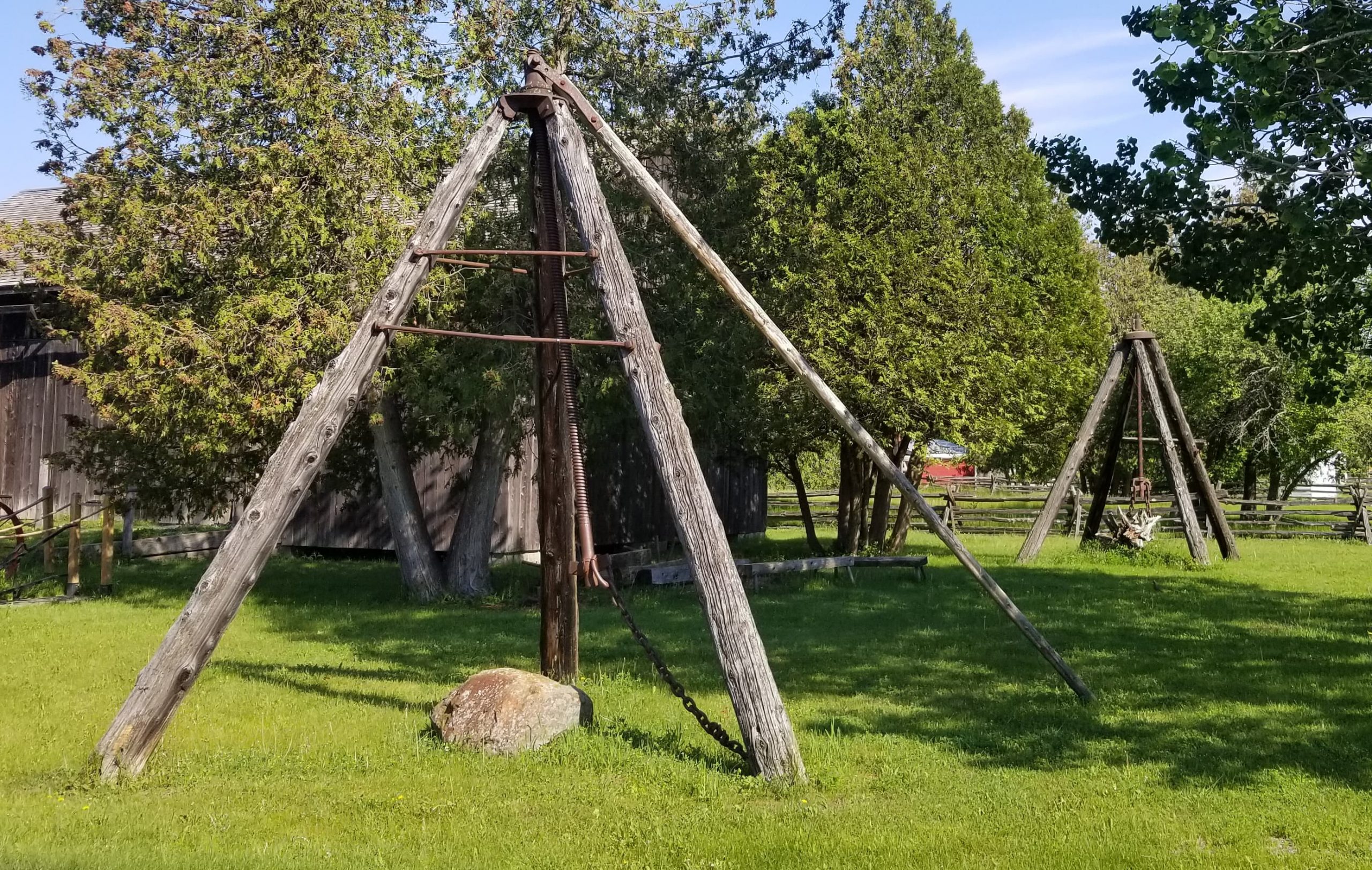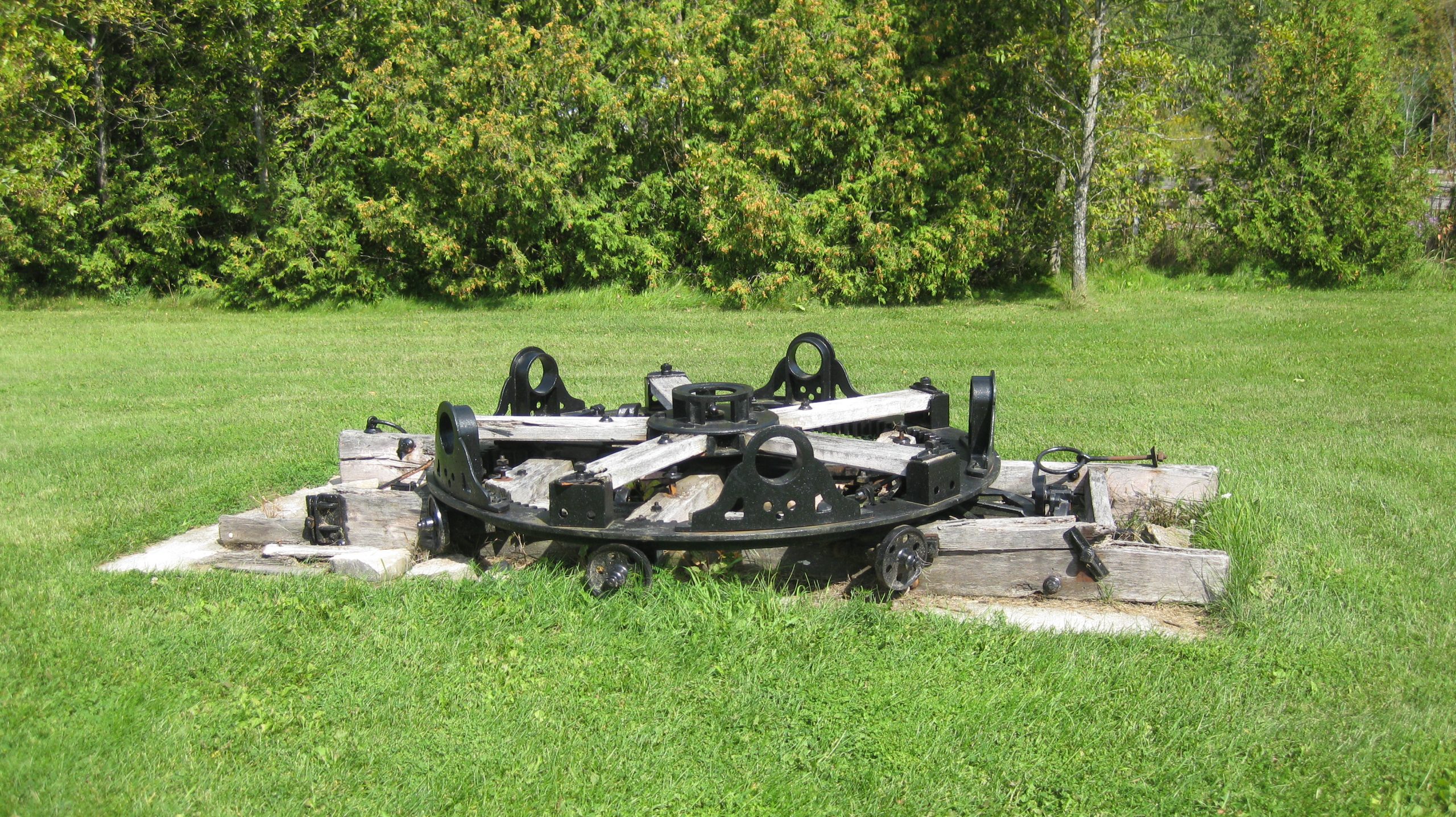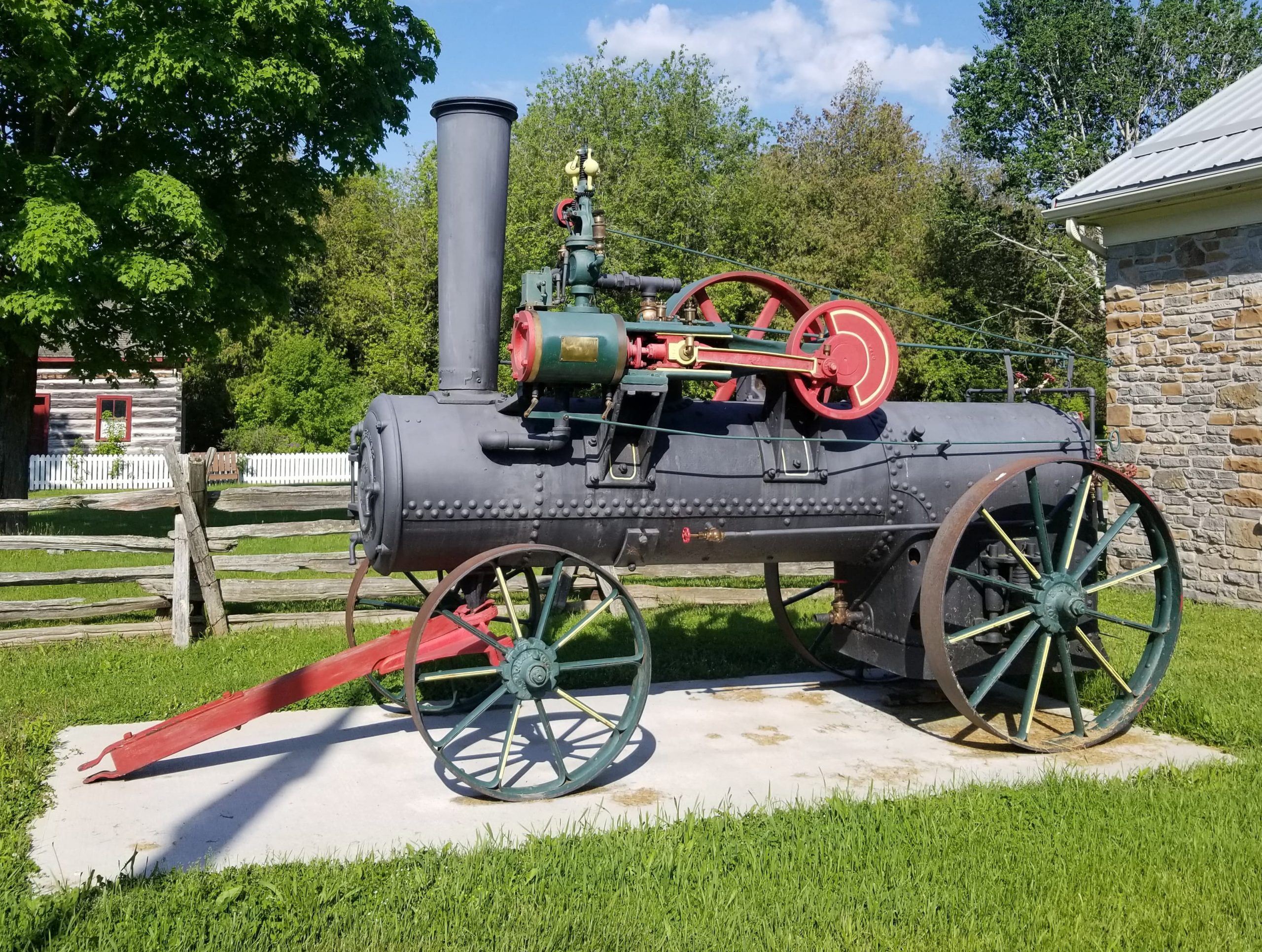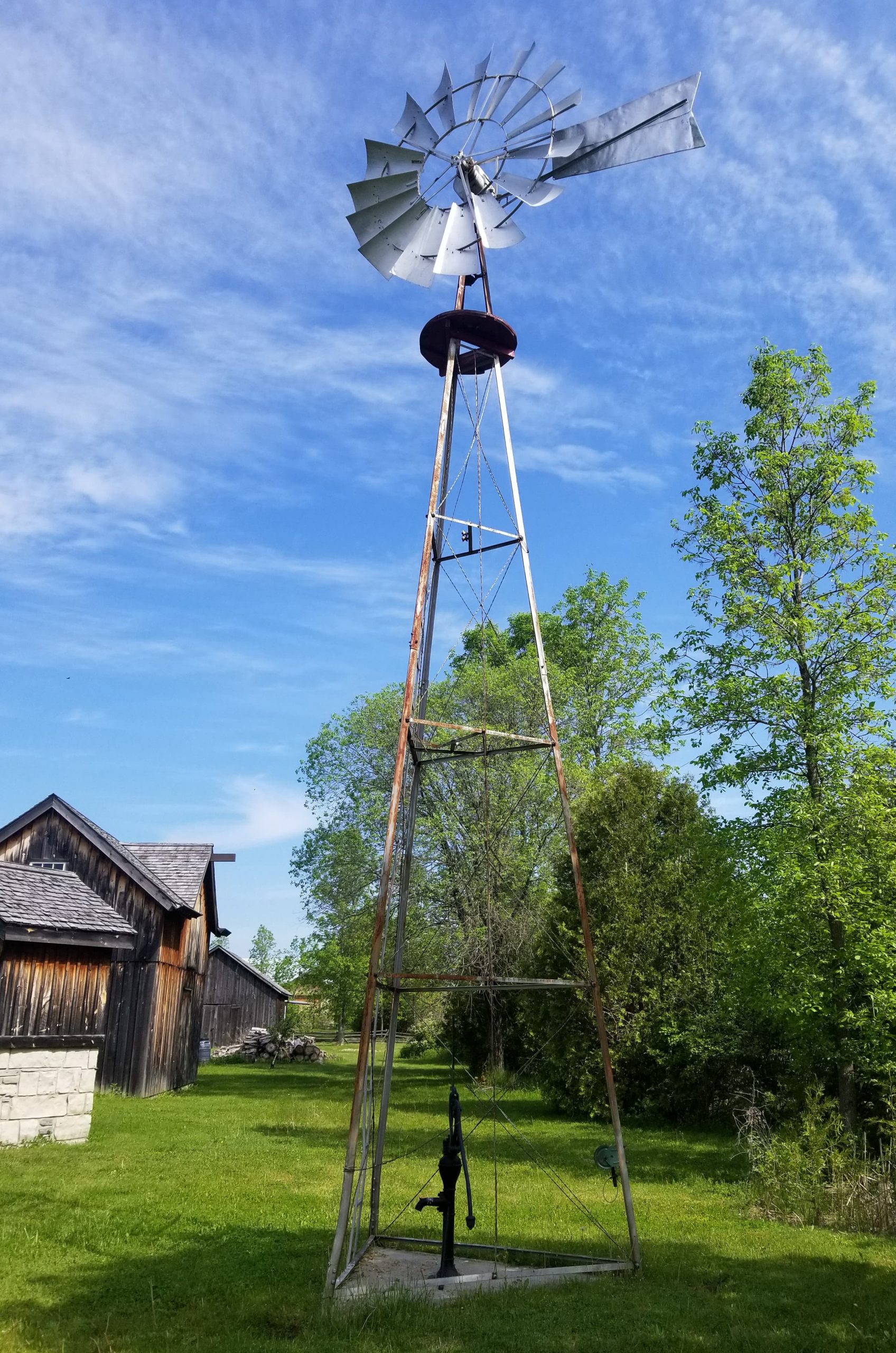Sources of Power

Stump & Stone Pullers
After removing the trees to clear the land, stumps were usually left to rot in the fields by the earliest settlers. By the 1840s, the early stump or stone pullers were available, consisting of a tripod of thick poles, with a heavy screw, and chains hung from the centre of the apex. The chains wrapped securely around the stone or stump, and the screw was twisted by human power (like a corkscrew) to lift the stump or stone out of the ground. Horses were later used both to turn the screw and to drag the larger wheeled version about the fields.
Horse Power
By the 1860s, most farmers were using mechanical horse power. Known as the horse-gear, horse-walk, or horse-work, it provided a cheap portable source of power. It remained in use until it was gradually replaced by gas-powered technology. The wheel was rotated by horses harnessed to the ends of sweeps (poles), and the motion was transferred by gearing a low horizontal drive shaft to the desired machinery, which stood outside of the circle walked by the horses. Horse powers were used for farm work, including sawing wood, making cider, cutting feed, and grinding


George White Steam Engine
Portable steam engines were in use for agriculture during the second half of the 19th Century and were the precursor to the traction steam engine. The steam power allowed farmers to operate large machinery such as thrashers and shingle mills. A heat source is needed to heat the water in the boiler, creating steam. The force produced by the steam pressure causes a piston to move back and forth inside a cylinder. The pushing force is transformed from the cylinder, by a connecting flywheel, into rotational force for work.
Windmill
By the late 1800s, many farmers were harnessing the wind to provide power for a variety of purposes, including sawing wood with a circular saw, turning grindstones, and particularly pumping water. The crank of the windmill, during its revolutions, worked the pump rod and raised the water from the well beneath. Whatever direction the wind blew, the pump would continue working.

